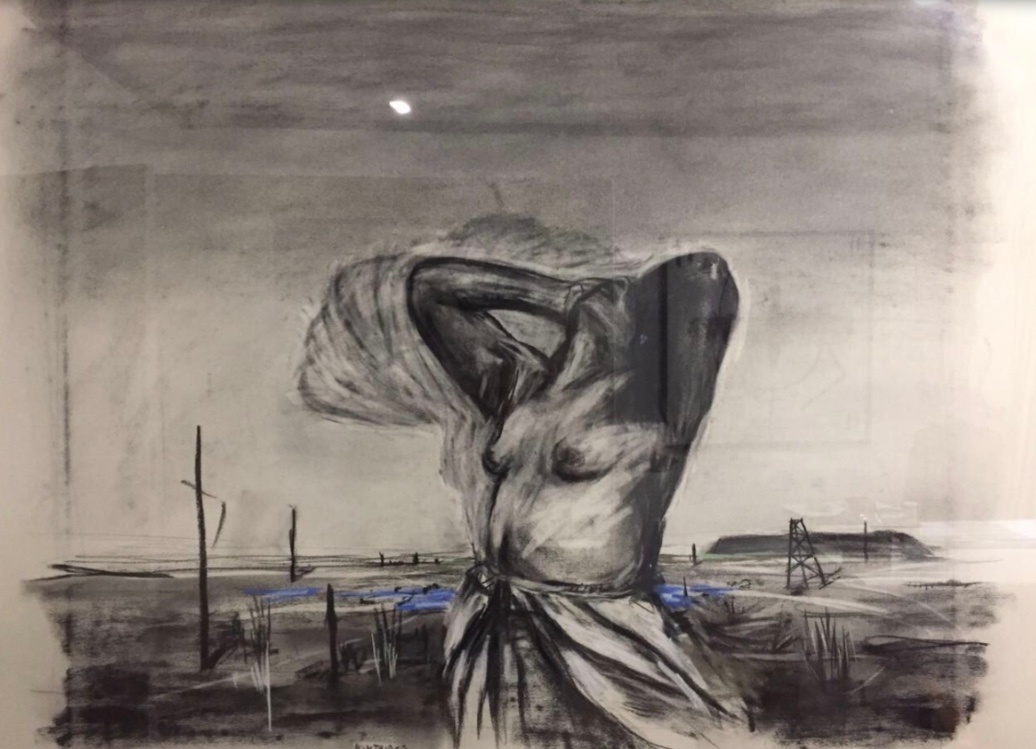William Kentridge

Made in 1994, the year of South Africa’s first democratic election, Felix in Exile offers a lyrical mediation on amnesty and amnesia. It explores, as Kentridge says, “the way in which the people who had died on the journey to this new dispensation would be remembered.” The film anticipates the beginning of the Truth and Reconciliation Commission, a restorative justice court that allowed both the victims and perpetrators of apartheid atrocities to recount their stories. Many guilty of crimes were offered amnesty in exchange for their transparency. This public truth-telling, the recounting of national traumas, not only relieved people of their most painful memories but hurried the past to a premature forgetting. In Kentridge’s film, bleeding bodies dissolve into a bleak landscape of mine dumps and slime dams. People disappear, the artist suggests, as too will our memories of them – yet the violence of the past is written on the land, is present in the very soil.
Drawing from Felix in Exile shows the character Nandi moments before she too is shot and joins the many bleeding bodies left lying on the dry earth.
b.1955, Johannesburg
Performing the character of the artist working on the stage (in the world) of the studio, William Kentridge centres art-making as primary action, preoccupation, and plot. Appearing across mediums as his own best actor, he draws an autobiography in walks across pages of notebooks, megaphones shouting poetry as propaganda, making a song and dance in his studio as chief conjuror in a creative play. Looking at his work, a ceaseless output and extraordinary contribution to the South African cultural landscape, one finds a repetition of people, places and histories: the city of Johannesburg, a white stinkwood tree in the garden of his childhood home (one of two planted when he was nine years old), his father (Sir Sydney Kentridge) and mother (Felicia Kentridge), both of whom contributed greatly to the dissolution of apartheid as lawyers and activists. The Kentridge home, where the artist still lives today, was populated in his childhood by his parents’ artist friends and political collaborators, a milieu that proved formative in his ongoing engagement with world histories of expansionism and oppression throughout the 20th century. Parallel to – or rather, entangled with – these reflections is an enquiry into art historical movements, particularly those that press language to unexpected ends, such as Dada, Constructivism and Surrealism.
Moving dextrously from the particular and personal to the global political terrain, Kentridge returns to metabolise these findings in the working home of the artist’s studio, where the practitioner is staged as a public figure making visible his modes of investigation. Celebrated as a leading artist of the 21st century, Kentridge is the artistic director of operas and orchestras, from Sydney to London to Paris to New York to Cape Town, known for his collaborative way of working that prioritises thinking together with fellow practitioners skilled in their disciplines (for example, as composers, as dancers). Most often, he is someone who draws, in charcoal, in pencil and pencil crayon, in ink, the gestures and mark-making assured. In a collection of books for which A4 acted as custodian during the exhibition History on One Leg, one finds 200 publications devoted to Kentridge’s practice. In the end, he has said, the work that emerges is who you are.